Japanese Tea
The Ultimate Guide To Japanese Tea: Types, Benefits, Brewing, And More
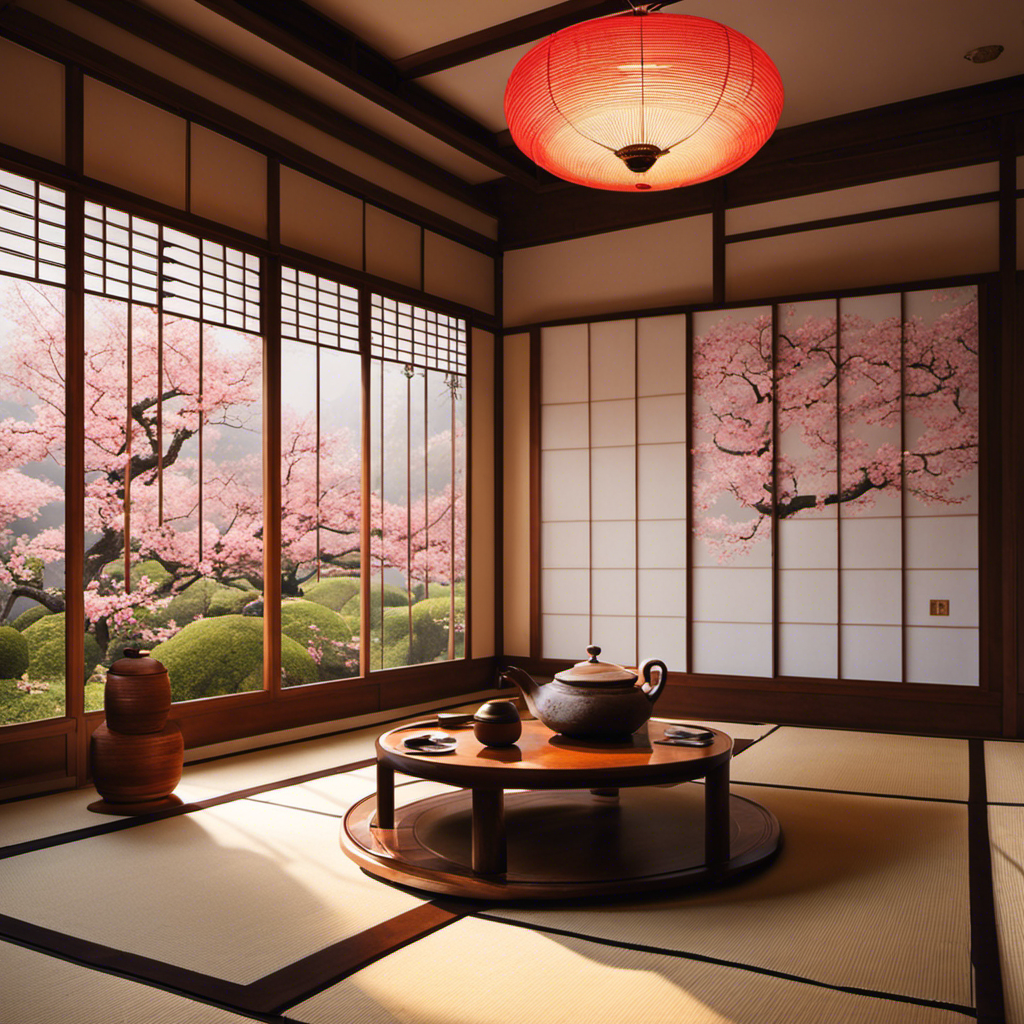
The adage ‘There’s nothing quite like a delightful cup of tea’ holds true, especially when delving into the world of Japanese tea. With options ranging from the lively, verdant Sencha to the potent, powder-rich Matcha, the variety of Japanese tea presents an array of tastes and advantages ready for discovery.
That’s why I’ve created ‘The Ultimate Guide to Japanese Tea: Types, Benefits, Brewing, and More.’ In this comprehensive guide, I’ll take you on a journey through the diverse landscape of Japanese tea, sharing everything from the different types of tea and their health benefits, to the art of brewing the perfect cup.
We’ll delve into Japanese tea culture, explore the intricacies of tea ranking and harvests, and even discuss the future of the industry.
So, grab your teapot and get ready to embark on a tea-filled adventure with me as your guide. Let’s dive into the world of Japanese tea together!
Key Takeaways
- There are various types of Japanese tea, including Sencha, Matcha, Gyokuro, and Hojicha.
- Japanese tea is high in nutrients and antioxidants, providing health benefits.
- Japanese tea can be purchased from Japanese tea farms, specialty tea shops, and online retailers.
- Brewing Japanese tea requires specific temperatures and times, with special instructions for matcha tea.
Types of Japanese Tea
I know that there are various types of Japanese tea, including Sencha, Matcha, Gyokuro, Hojicha, Genmaicha, Kukicha, Bancha, Tamaryokucha, Mecha, and Sakuracha.
Japanese tea production is a meticulous process that involves harvesting and processing the tea leaves. Each type of tea has its own unique flavor profile and brewing requirements.
Japanese tea brands play a significant role in showcasing the diversity and quality of Japanese tea. They specialize in different types of tea and often have their own unique processing techniques. Some popular Japanese tea brands include Ippodo, Marukyu-Koyamaen, and Tsuen Tea. These brands have built a reputation for producing high-quality teas and are often sought after by tea enthusiasts worldwide.
Whether you’re looking for a refreshing Sencha or a ceremonial grade Matcha, Japanese tea offers a wide range of options to satisfy any tea lover’s palate.
Health Benefits
High in nutrients and antioxidants, Japanese tea offers a range of health benefits. When it comes to weight loss, Japanese tea can be a valuable addition to your routine. The catechins found in Japanese tea, such as matcha and sencha, have been shown to boost metabolism and aid in fat oxidation.
Additionally, the presence of l-theanine in Japanese tea promotes relaxation and helps reduce stress-related eating, making it an excellent choice for those looking to manage their weight.
Japanese tea is also known for its skincare benefits. The antioxidants present in Japanese tea help protect the skin from free radicals, preventing premature aging and promoting a healthy complexion. The tea’s anti-inflammatory properties can also soothe irritated skin and reduce redness.
Whether enjoyed hot or cold, Japanese tea is a refreshing and nourishing beverage that can contribute to your overall well-being. So, sip on a cup of Japanese tea and reap its many health rewards.
Japanese Tea Culture
Immerse yourself in the captivating world of Japanese tea culture, where ancient traditions and the delicate art of tea ceremonies intertwine like a graceful dance.
Japanese tea ceremonies, known as ‘chanoyu’ or ‘sado,’ hold immense cultural significance in Japan. These ceremonies date back centuries and are a reflection of the country’s deep appreciation for simplicity, harmony, and mindfulness.
Tea ceremonies are carefully choreographed events that involve the preparation and serving of matcha, a powdered green tea. Each movement, from the way the tea is whisked to the way it is presented, is done with precision and grace. The ceremonies often take place in specially designed tea rooms, where the atmosphere is serene and tranquil.
Japanese tea ceremonies go beyond simply drinking tea; they are a way of connecting with oneself, others, and nature. They symbolize respect, gratitude, and a sense of harmony with the surrounding world. The rituals and etiquette observed during these ceremonies highlight the importance of mindfulness and being fully present in the moment.
Participating in a Japanese tea ceremony is not just about enjoying a cup of tea; it is a profound experience that allows one to appreciate the beauty of Japanese culture and the art of tea.
Frequently Asked Questions
What is the caffeine content in Japanese teas?
The caffeine content in Japanese teas can vary depending on the type of tea and the brewing method. However, Japanese teas generally contain moderate levels of caffeine, which can provide a natural boost of energy and various health benefits, such as improved focus and alertness. The caffeine in tea can also have positive effects on the body, such as boosting metabolism and enhancing physical performance.
Can Japanese tea be enjoyed cold or iced?
Japanese tea is not only enjoyed hot, but it can also be a refreshing summer beverage when served cold or iced. Cold Japanese tea retains its health benefits, providing a cool and rejuvenating experience.
Are there any specific tea blends unique to Japan?
Yes, there are specific tea blends unique to Japan. Some examples include Genmaicha, which combines green tea with roasted rice, and Sakuracha, which is made from cherry blossoms. These blends are often enjoyed during Japanese tea ceremonies using traditional tea utensils.
How long do Japanese teas stay fresh after opening?
Japanese teas stay fresh for different lengths of time depending on the type. Generally, green teas like Sencha and Matcha have a shelf life of 6-12 months if stored properly. To maintain freshness, store them in airtight containers in a cool, dry place away from light and strong odors.
What is the difference between ceremonial grade and culinary grade matcha?
When choosing between ceremonial grade matcha and culinary grade matcha, it’s important to understand the different qualities. Ceremonial grade is higher quality, with a vibrant green color and a smooth, delicate flavor, while culinary grade is more suited for cooking or blending.
Conclusion
Wow, after reading the ultimate guide to Japanese tea, I feel like a tea expert! This comprehensive overview covered everything from the different types of Japanese tea to their health benefits and even where to buy them.
I learned that Japanese tea is not only delicious but also packed with nutrients and antioxidants. The guide also delved into the fascinating culture and history of Japanese tea.
With its brewing instructions and insights into tea utensils, I now feel confident in making the perfect cup of Japanese tea. This guide truly has it all, and I can’t wait to explore the world of Japanese tea further.
Get ready to embark on a tea-filled journey like no other!
Arf, an author and an innovative enthusiast of coffee, coffee alternatives, and tea, plays a crucial role as a contributor to the esteemed Cappuccino Oracle platform. Renowned for his curiosity and passion for these captivating beverages, Arf has carved out a unique space for himself in the world of exploration and writing. He realized that coffee, coffee alternatives, and tea are not mere drinks to keep one awake, but universes of flavors and stories waiting to be explored.
Arf’s articles for Cappuccino Oracle blend meticulous research with personal experiences, providing readers with an in-depth understanding of various types of coffee, coffee alternatives, and tea, along with their unique characteristics, cultures, and histories. His honest reviews and engaging narratives guide readers on their own journeys, helping them discover their preferences and find their perfect brew.
Japanese Tea
The Philosophy And Tranquility Of Japanese Tea Ceremony
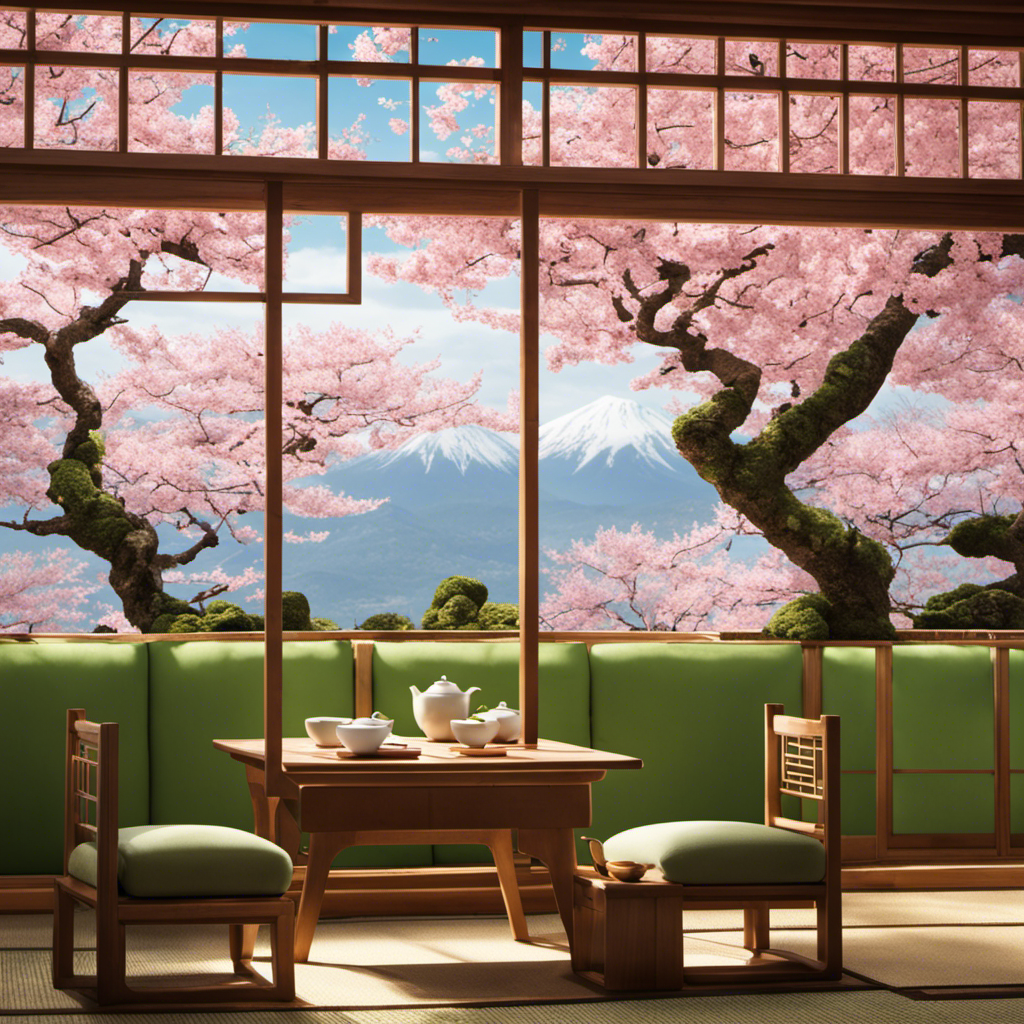
Sitting here, enjoying a warm cup of green tea, I find myself reflecting on the profound philosophy and serenity encapsulated by the Japanese tea ceremony. This ceremony, a magnificent fusion of art and heritage, has enchanted me with its elegance and simplicity.
It is an experience that transports you to a world of harmony, respect, and purity. From the moment you step into the tea house, you are enveloped in a sense of calmness, as if time itself slows down. The meticulous preparation, from purifying the heart and thoughts to cleansing the hands and mouth, sets the stage for the ritual to unfold.
Every object, from the incense holder to the tea whisk, serves a purpose in creating a serene atmosphere. And then, as the tea is meticulously prepared and presented, you can’t help but feel a sense of reverence and humility.
The Japanese tea ceremony is a true testament to the power of simplicity and the beauty of mindfulness.
Key Takeaways
- The Japanese tea ceremony embodies deep-rooted philosophy and tranquility, blending art and tradition to captivate with simplicity and grace.
- The ceremony promotes purification and reverence, with meticulous preparation purifying the heart, thoughts, hands, and mouth.
- Simplicity and mindfulness are showcased in the tea ceremony, with teachings of patience, respect, and modesty emphasizing their significance and values.
- The tea ceremony is deeply connected to nature, reflecting a reverence for nature through modest decoration and the use of natural materials, promoting harmony and balance in life.
Significance and Values
The significance and values of the Japanese tea ceremony can be seen in the teachings of patience, respect, and modesty, which are all emphasized during the practice.
One of the key aspects of the tea ceremony is the importance of mindfulness. By focusing on each step of the ceremony, from the purification rituals to the preparation and serving of tea, participants learn to be fully present in the moment and appreciate the beauty of simplicity. This mindfulness cultivates a sense of tranquility and inner peace.
Additionally, the tea ceremony is deeply connected to nature. The modest decoration of the tea room, the use of natural materials in the utensils, and the appreciation of seasonal elements in the flower arrangements all reflect a reverence for the natural world. This connection to nature fosters a deeper understanding and respect for the environment, promoting harmony and balance in one’s life.
Sen no Rikyu’s Revolution
After Sen no Rikyu revolutionized the tea ceremony, a more humble and rustic vision was promoted. Sen no Rikyu’s influence was significant in the evolution of the tea ceremony. He emphasized tranquility and simplicity, deviating from the lavish and extravagant practices of the past.
Rikyu introduced the concept of wabi-sabi, which celebrates the beauty in imperfection and impermanence. This philosophy resonated with the Japanese culture at the time, which valued austerity and modesty. Rikyu’s tea rooms were characterized by minimal decoration, with a focus on natural materials and subdued colors.
The tea ceremony became a means of promoting humility and respect, as participants were encouraged to appreciate the simplicity and tranquility of the moment. Rikyu’s revolution of the tea ceremony had a lasting impact, shaping the practice into the form we know today.
Process and Rituals
During the tea ceremony, I can’t help but feel a sense of awe as I witness the meticulous process of preparing and serving the tea, which requires a staggering amount of precision and attention to detail.
The ceremony begins with cleansing rituals, symbolizing the purification of the heart and mind. Guests are required to purify their hands and mouth before entering the tea house, emphasizing the importance of cleanliness and respect.
The tea preparation itself is a carefully choreographed ritual. The tea whisk and tea bowl are warmed, and the tea bowl is then meticulously cleaned. Matcha and water are added to create a smooth texture, and the tea is whisked with utmost care.
Finally, the tea is presented to the guest, who receives it with gratitude. The entire process promotes humility, respect, and tranquility, as each step is performed with utmost precision and mindfulness.
Frequently Asked Questions
What is the historical significance of the Japanese tea ceremony?
The Japanese tea ceremony holds historical significance as a part of medieval Japanese culture. It is a cultural practice that promotes patience, respect, and modesty, based on the philosophy of Harmony, Respect, Purity, and Tranquility.
How does the tea ceremony promote mindfulness and self-reflection?
The tea ceremony promotes mindfulness and self-reflection by creating a serene and focused environment, similar to a calm lake reflecting the beauty around it. The benefits on mental health include reducing stress and enhancing relaxation. The connection between the tea ceremony and mindfulness practices lies in the emphasis on being present in the moment, observing and appreciating every action with full awareness. The process of making and serving tea requires concentration and attention to detail, which helps to quiet the mind and cultivate a sense of inner peace. This practice fosters self-reflection as it encourages individuals to examine their thoughts and emotions, promoting a deeper understanding of oneself and fostering personal growth.
Are there any specific rules or etiquette that guests must follow during the tea ceremony?
During the tea ceremony, guests must follow specific rules and etiquette. These include purifying hands and mouth, sitting in a specific manner, and showing respect through gestures. These gestures are important as they reflect the principles of harmony, respect, and tranquility.
What is the symbolism behind the objects used in the tea ceremony, such as the incense holder and tea whisk?
The incense holder, known as koro, symbolizes purification and adds a pleasant aroma to the tea room. The tea whisk, or chasen, is a tool used to froth the matcha, representing the harmony and skill required in the tea ceremony. Both objects hold cultural significance in the Japanese tea ceremony.
How has the tea ceremony evolved and adapted over time?
Over time, the tea ceremony has evolved and adapted, especially in terms of tea utensils. The influence of Zen Buddhism led to the simplification and refinement of the objects used, emphasizing minimalism and tranquility.
Conclusion
In conclusion, the Japanese tea ceremony is a profound embodiment of harmony, respect, purity, and tranquility. Through the teachings of Sen no Rikyu, the ceremony has evolved into a humble and rustic vision that emphasizes the importance of tranquility in our lives.
The preparation process, with its focus on purifying the heart and thoughts, sets the stage for a truly meditative experience. The various objects used and the meticulous process of making and serving tea further enhance the sense of humility and respect.
Ultimately, the tea ceremony offers a unique opportunity to find peace and serenity in the midst of our busy lives.
Arf, an author and an innovative enthusiast of coffee, coffee alternatives, and tea, plays a crucial role as a contributor to the esteemed Cappuccino Oracle platform. Renowned for his curiosity and passion for these captivating beverages, Arf has carved out a unique space for himself in the world of exploration and writing. He realized that coffee, coffee alternatives, and tea are not mere drinks to keep one awake, but universes of flavors and stories waiting to be explored.
Arf’s articles for Cappuccino Oracle blend meticulous research with personal experiences, providing readers with an in-depth understanding of various types of coffee, coffee alternatives, and tea, along with their unique characteristics, cultures, and histories. His honest reviews and engaging narratives guide readers on their own journeys, helping them discover their preferences and find their perfect brew.
Japanese Tea
The Essence Of The Japanese Tea Ceremony: A Complete Set Of Utensils
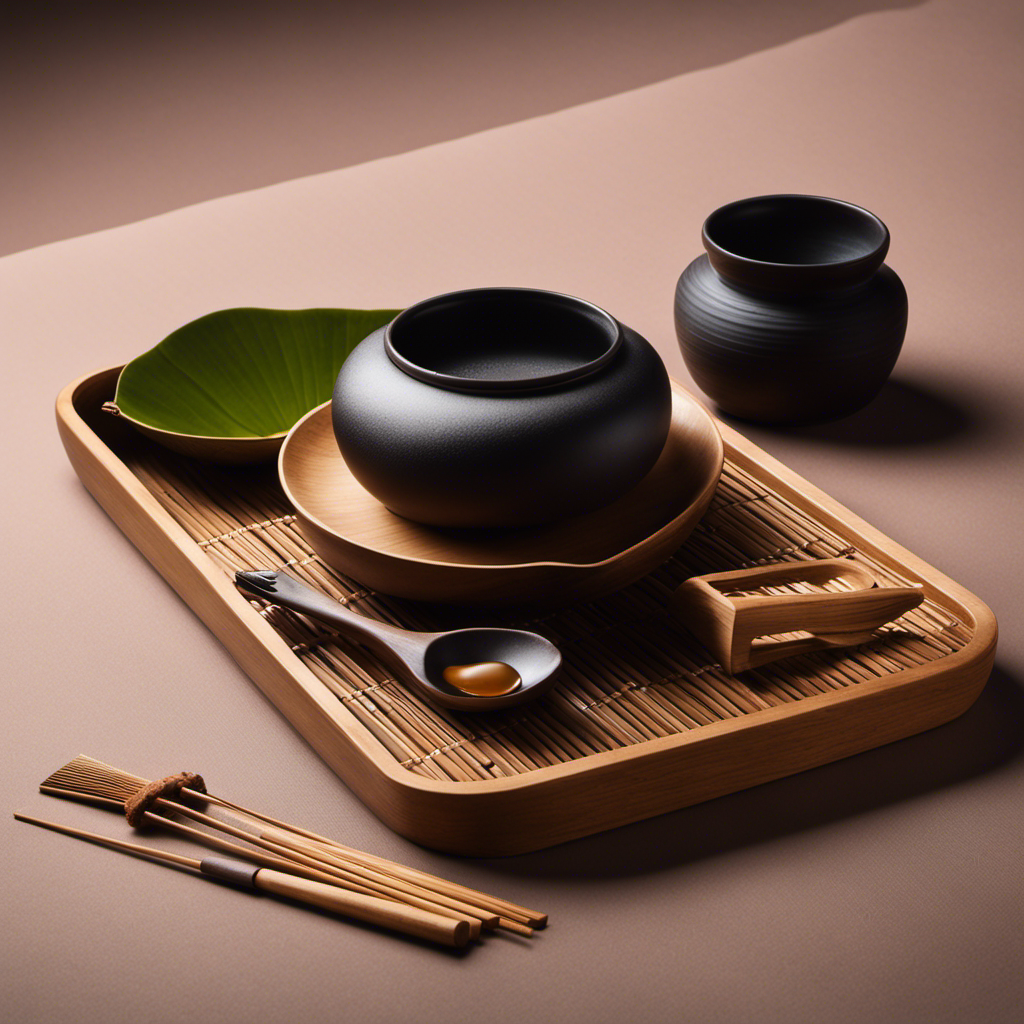
Seated in a cross-legged position on the tatami mat, the air was infused with the delightful scent of freshly brewed matcha tea. Surrounding me, the room was decorated with fine Japanese art, imparting a sense of serenity and sophistication. Before me, a carefully organized collection of utensils was poised for use.
Each utensil, carefully crafted and steeped in tradition, played a vital role in the sacred Japanese tea ceremony.
The Japanese tea ceremony is a profound cultural practice that goes beyond simply serving tea. It is a reflection of harmony, respect, and mindfulness. The ceremony follows a meticulous process, from the preparation of the tea room to the cleansing of the utensils. Every step is done with intention and grace, creating a sacred space for connection and reflection.
At the heart of this ceremony lies a complete set of 19 utensils, each serving a specific function. From the delicate chawan (matcha bowl) to the precise chasen (whisk), the utensils come together to create a harmonious experience for both the host and guests.
In this article, we will explore the essence of the Japanese tea ceremony and delve into the significance of a complete set of utensils. Join me as we embark on a journey of tradition, mindfulness, and the art of tea.
Key Takeaways
- The Japanese tea ceremony is a traditional cultural activity that involves ceremonial matcha.
- The Japanese tea ceremony set consists of 19 utensils, including a tea caddy, bamboo whisk, matcha bowl, iron pot, and various other utensils.
- The tea ceremony process involves sending out invitations, cleaning and decorating the tea ceremony room, purifying guests before they enter, serving tea ceremony sweets, preparing thin and thick matcha tea, and cleaning the utensils after the ceremony.
- Tea ceremony sets, including matcha bowls, tea, whisks, and spoons, can be found on our website.
What is it?
I can explain what the tea ceremony set is in the context of my pre-existing knowledge.
The tea ceremony set is a collection of utensils used in the traditional Japanese tea ceremony, a cultural activity centered around ceremonial matcha. This set consists of 19 utensils, each with its own symbolic meaning and cultural significance.
The utensils include the chaire, chakin, chasen, chashaku, chawan, fukusa, furo, futaoki, hishaku, kama, kaishi, kensui, kobukusa, mizusashi, natsume, sensu, shifuku, ro, and yakan. Each utensil plays a specific role in the tea ceremony, from scooping and whisking the matcha tea to purifying objects and serving sweets.
The tea ceremony set is carefully chosen and prepared by the host to create a serene and harmonious atmosphere, embodying the essence of Japanese culture and tradition.
Components of the Set
The tea ceremony set includes a variety of items necessary for the traditional cultural activity. These items serve specific purposes and play a crucial role in the tea ceremony. They reflect the attention to detail and reverence for tradition that is central to Japanese culture.
The set includes the tea caddy, called the chaire, which holds the matcha powder and is reserved for special ceremonies. The bamboo whisk, or chasen, is used to whisk the matcha tea to create a smooth and frothy texture. The spoon, known as the chashaku, is used to measure the precise amount of matcha powder.
The matcha bowl, or chawan, with its steeper sides, allows for easier whisking. The towel, or chakin, is used to clean the matcha bowl. The bamboo ladle, or hishaku, is used to scoop water into the matcha bowl.
Each utensil holds a traditional significance, representing the harmony and simplicity that are integral to the tea ceremony.
Steps of the Ceremony
To understand the steps of the tea ceremony, one must first familiarize themselves with the process of preparing and serving matcha tea. The ceremony is filled with symbolic gestures and has a purpose of purification. Here are the steps of the Japanese tea ceremony:
-
Guests are invited into the tea room by the host and remove their shoes as a symbol of purification.
-
Upon entering, guests bow and sit down, while the host acknowledges their presence.
-
Japanese tea ceremony sweets may be served and exchanged as a gesture of hospitality.
-
The tea master cleans the tea ceremony set in front of the guests, emphasizing the importance of purity.
-
Thin matcha tea is prepared by adding hot water to the matcha bowl and whisking vigorously with the bamboo whisk.
-
Thick matcha tea, known as koicha, is prepared using a higher concentration of matcha powder and less water.
-
After each guest drinks from the matcha bowl, they use paper napkins to clean it before passing it to the next guest.
-
Once the tea ceremony is complete, the host cleans all the utensils, demonstrating purity and respect.
-
Guests are then allowed to depart, and the host bows to each guest individually, expressing gratitude for their presence.
These steps, filled with symbolic gestures and focused on purification, create a serene and tranquil atmosphere during the tea ceremony.
Tea Ceremony Room
In the tea ceremony room, the ambiance is carefully set with minimal decorations and a flower arrangement. The design of the room is of great significance as it plays a vital role in creating a serene and tranquil atmosphere for the ceremony. The tea ceremony room is typically small and intimate, allowing for a close and personal connection between the host and guests. The room is sparsely furnished, with tatami mats covering the floor and a low ceiling to create a sense of intimacy and closeness. The walls are adorned with a scroll and the flower arrangement adds a touch of natural beauty to the space. The tea ceremony room is designed to evoke a feeling of simplicity, purity, and harmony, reflecting the essence of the tea ceremony itself.
| Utensils | Purpose | Symbolism |
|---|---|---|
| Chasen | Whisking matcha | Represents the unity among participants |
| Chawan | Matcha bowl | Symbolizes the connection between the host and guests |
| Fukusa | Dry towel | Signifies the purification of objects |
| Futaoki | Lid holder | Represents respect for the utensils |
The design and layout of the tea ceremony room are carefully considered to ensure that every aspect enhances the experience and allows participants to fully immerse themselves in the ritual.
Tea Ceremony Set Availability
I can find a variety of tea ceremony sets, including matcha bowls, tea, whisks, and spoons, on our website. We offer a wide range of options to suit different preferences and budgets. Our tea ceremony sets are carefully selected to ensure the highest quality and authenticity.
Whether you’re a beginner or an experienced tea ceremony practitioner, you can find the perfect set to enhance your tea ceremony experience. Our website provides a convenient and reliable platform to purchase tea ceremony sets, eliminating the need to search for physical stores. With just a few clicks, you can browse through our collection, compare prices, and make a purchase from the comfort of your own home.
We’re committed to providing exceptional customer service and guaranteeing the availability of tea ceremony sets for all tea enthusiasts.
Frequently Asked Questions
How long does it take to master the art of the Japanese tea ceremony?
It takes an average of 5 to 6 years to master the art of the Japanese tea ceremony. This includes learning the intricate tea ceremony techniques, such as proper whisking and bowl cleaning.
Are there any specific rules or etiquette that guests need to follow during the tea ceremony?
During the tea ceremony, guests must follow specific rules and etiquette. This includes wearing appropriate attire and sitting in the proper seating arrangement. These guidelines ensure a respectful and harmonious atmosphere for the ceremony.
What is the significance of the flower arrangement and scroll in the tea ceremony room?
The flower arrangement and scroll in the tea ceremony room hold great significance. The flower arrangement represents nature’s beauty and impermanence, while the scroll showcases a meaningful message or poem, enhancing the overall aesthetic and ambiance of the ceremony.
Can you elaborate on the purification rituals performed by guests before entering the tea room?
Before entering the tea room, guests participate in purification rituals as a symbol of respect and cleanliness. This includes removing shoes, washing hands, and bowing before entering. These rituals are an important part of the Japanese tea ceremony.
Are there any specific types of tea that are commonly used in the Japanese tea ceremony?
Different types of tea used in the Japanese tea ceremony include matcha, which is powdered green tea, and usucha, which is a thin tea. Traditional tea ceremonies typically use matcha, while modern adaptations may use other types of tea.
Conclusion
Well, after spending four long hours preparing and serving tea, cleaning all those utensils, and maintaining the utmost purity, I can confidently say that the Japanese tea ceremony is truly a piece of cake.
Who needs a quick and easy cup of tea when you can spend half a day meticulously following a specific process? And don’t worry, if you’re feeling particularly adventurous, you can even find a complete tea ceremony set online to recreate this delightful experience in the comfort of your own home.
Because who doesn’t want to spend hours on end pretending to be a tea master?
Arf, an author and an innovative enthusiast of coffee, coffee alternatives, and tea, plays a crucial role as a contributor to the esteemed Cappuccino Oracle platform. Renowned for his curiosity and passion for these captivating beverages, Arf has carved out a unique space for himself in the world of exploration and writing. He realized that coffee, coffee alternatives, and tea are not mere drinks to keep one awake, but universes of flavors and stories waiting to be explored.
Arf’s articles for Cappuccino Oracle blend meticulous research with personal experiences, providing readers with an in-depth understanding of various types of coffee, coffee alternatives, and tea, along with their unique characteristics, cultures, and histories. His honest reviews and engaging narratives guide readers on their own journeys, helping them discover their preferences and find their perfect brew.
Japanese Tea
The Art Of Japanese Tea: Tradition, History, And Facts
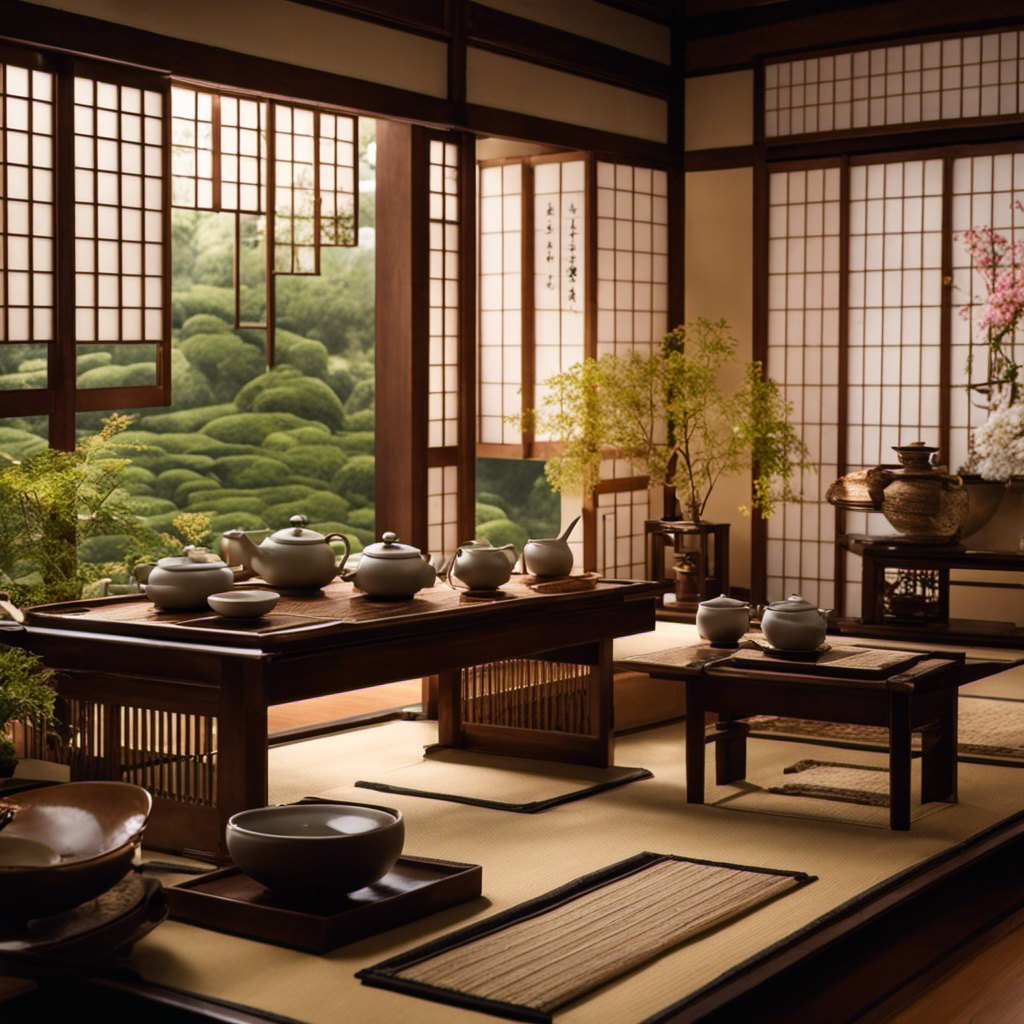
I’ve always been enchanted by the artistry of Japanese tea. The graceful gestures, the careful preparation, and the tranquil environment combine to offer a unique sensory journey.
The Japanese Tea Ceremony, also known as Chanoyu, is a centuries-old tradition that holds a wealth of history and fascinating facts. It is a ritual that revolves around the preparation and serving of matcha tea, a vibrant and powdered form of green tea.
From its origins in the Sengoku period to its transformation into a symbol of humility and equality, the tea ceremony embodies principles of harmony, respect, purity, and tranquility.
As a tea enthusiast, I am eager to delve into the intricacies of this ancient practice, explore its cultural significance, and understand the values it upholds.
Join me on this journey as we uncover the secrets and beauty of the Japanese tea ceremony.
Key Takeaways
- The Japanese tea ceremony is a cultural practice with historical significance, dating back to the Sengoku period in the 1500s.
- The tea ceremony promotes the principles of Harmony, Respect, Purity, and Tranquility.
- Matcha was the most common form of tea consumed in medieval Japan and is still used in the Japanese tea ceremony today.
- The tea ceremony requires practice and there are dedicated schools for learning it.
What is it?
I know that the Japanese tea ceremony, also known as the matcha tea ceremony, is a traditional practice that involves the preparation and serving of matcha tea using specific utensils and following a set of steps.
The origins of the Japanese tea ceremony can be traced back to the Sengoku period in the 1500s. During this time, tea was initially used by monks for meditation and later became a status symbol for the wealthy elite.
Matcha, a powdered form of green tea, was the most common form of tea consumed in medieval Japan and continues to be the tea of choice for the tea ceremony. Unlike loose leaf tea, matcha is finely ground and dissolved in water, creating a smooth and vibrant beverage.
This unique preparation method requires practice and precision, as the tea master uses specific utensils for each step of the ceremony.
The Japanese tea ceremony promotes harmony, respect, purity, and tranquility, making it a truly special and revered tradition.
Cultural Significance
Cultural Significance is evident in the Japanese tea ceremony, as it promotes mutual respect and emphasizes the core values of harmony, respect, purity, and tranquility.
The tea ceremony has had a profound cultural impact on Japanese society, shaping the way people interact and appreciate tea. Although the tea ceremony has ancient roots, it has also undergone modern adaptations to remain relevant in today’s society.
The ceremony serves as a symbol of Japan’s rich cultural heritage and traditions, and it is a way for people to connect with their history. It provides a space for individuals to escape the hectic pace of modern life and find inner peace and tranquility.
The tea ceremony also serves as a platform for social interaction and bonding, as guests and hosts come together to share a moment of mindfulness and appreciation for the art of tea.
Steps of the Ceremony
The first step of the Japanese tea ceremony involves bowing to show respect to the host and create a harmonious atmosphere. After the initial bow, attention is directed towards the tea utensils used in the ceremony. These include the fukusa, a silk cloth used to clean the tea utensils, the natsume, a container for the powdered matcha tea, the chashaku, a bamboo spoon for scooping the matcha, the kama, a kettle used to heat the water, the hishaku, a bamboo ladle for pouring the water, the matcha bowl, used to whisk the matcha, the matcha whisk, used to mix the matcha powder and hot water, the kensui, a waste water container, and the chakin, a white cloth used to wipe the tea bowl.
Once the tea utensils are prepared, the matcha is carefully whisked to create a smooth and frothy consistency. The tea is then served to the guests, accompanied by wagashi, traditional Japanese sweets.
The steps of the ceremony are performed with precision and grace, emphasizing the principles of harmony, respect, purity, and tranquility.
Historical Background
During my research, I discovered that the Japanese tea ceremony has a rich historical background dating back to the Sengoku period in the 1500s. Over the years, the tea ceremony has evolved and adapted to the modern times, while still holding on to its traditional roots.
The ceremony’s etiquette has also undergone changes, reflecting shifts in societal values and customs. In modern times, the Japanese tea ceremony continues to be a revered cultural practice that promotes harmony, respect, purity, and tranquility. It is no longer limited to the wealthy elite but is accessible to people from all walks of life.
The focus of the ceremony remains on the principles of hospitality and mutual respect between the host and guest. The tea room, sparsely decorated with a scroll and flower arrangement, provides a serene and tranquil environment for the ceremony.
Throughout its history, the tea ceremony has served as a symbol of Japanese culture and has been practiced and cherished by generations. Its evolution and adaptation have allowed the tea ceremony to remain relevant and continue to be a cherished tradition in Japan.
Principles and Values
Wow, the principles and values of the Japanese tea ceremony are like a powerful force that transport you to a world of harmony, respect, purity, and tranquility.
In the tea ceremony, tea etiquette is of utmost importance. It’s essential to follow the proper rituals and gestures to show respect to the host and other participants.
Tea ceremony attire is also a significant aspect of the ceremony. Guests are expected to dress in clean and modest clothing, preferably in traditional Japanese attire such as a kimono. This attire reflects the value of purity and simplicity that’s central to the tea ceremony.
By adhering to these principles and values, participants can fully immerse themselves in the experience and cultivate a sense of tranquility and appreciation for the beauty of the ceremony.
Frequently Asked Questions
What are the health benefits of drinking matcha tea?
Drinking matcha tea offers numerous health benefits. It is rich in antioxidants, boosts metabolism, enhances focus and concentration, detoxifies the body, and promotes relaxation. Its unique preparation techniques ensure maximum nutrient absorption.
Are there any specific rules or etiquette to follow during the Japanese tea ceremony?
During the Japanese tea ceremony, there are traditional tea ceremony rules and Japanese tea ceremony etiquette that must be followed. These rules include proper bowing, purification of tea ware, and respectful handling of utensils.
How long does a typical Japanese tea ceremony last?
A typical Japanese tea ceremony can last anywhere from 30 minutes to several hours, depending on the occasion and the level of formality. The length of the ceremony is significant as it allows for a deeper appreciation of the ritual and the tea itself.
Can you participate in a Japanese tea ceremony as a visitor or tourist?
Can I participate in a Japanese tea ceremony as a visitor or tourist? Absolutely! Participating in a tea ceremony is a wonderful way to experience Japanese culture. Just remember to follow the tea ceremony etiquette and show respect to the host and the ritual.
Are there any regional variations or different styles of the Japanese tea ceremony?
Yes, there are regional variations and different styles of the Japanese tea ceremony. Each region in Japan has its own unique tea ceremony traditions and techniques, resulting in distinct regional variations and styles of the ceremony.
Conclusion
In conclusion, the Japanese tea ceremony is a profound practice that symbolizes much more than just the act of serving and drinking tea. It represents the core values of harmony, respect, purity, and tranquility, fostering a positive relationship between the host and guest.
The sparse decoration of the tea room serves as a symbol of simplicity, allowing participants to fully immerse themselves in the experience. Just as the tea master carefully selects and cleans each utensil, the ceremony teaches us the importance of mindfulness and attention to detail in our daily lives.
By partaking in this traditional art form, we not only appreciate the rich history and cultural significance but also embrace the deeper symbolism it holds.
Arf, an author and an innovative enthusiast of coffee, coffee alternatives, and tea, plays a crucial role as a contributor to the esteemed Cappuccino Oracle platform. Renowned for his curiosity and passion for these captivating beverages, Arf has carved out a unique space for himself in the world of exploration and writing. He realized that coffee, coffee alternatives, and tea are not mere drinks to keep one awake, but universes of flavors and stories waiting to be explored.
Arf’s articles for Cappuccino Oracle blend meticulous research with personal experiences, providing readers with an in-depth understanding of various types of coffee, coffee alternatives, and tea, along with their unique characteristics, cultures, and histories. His honest reviews and engaging narratives guide readers on their own journeys, helping them discover their preferences and find their perfect brew.
-

 Coffee Alternatives And Tea3 weeks ago
Coffee Alternatives And Tea3 weeks agoNutritionists Are Raving About This Coffee Alternative – Here’s Why
-

 Coffee Alternatives And Tea3 weeks ago
Coffee Alternatives And Tea3 weeks agoThe ‘Miracle Tea’ That’s Helping People Sleep Better Than Ever
-

 Coffee, Tea and Alternatives and Health plus Fitness3 weeks ago
Coffee, Tea and Alternatives and Health plus Fitness3 weeks agoThe Shocking Reason Health Experts Are Abandoning Green Tea
-

 Coffee Alternatives And Tea2 weeks ago
Coffee Alternatives And Tea2 weeks agoThe Tea That’s So Good, It’s Causing Shortages Worldwide
-

 Coffee Alternatives And Tea3 weeks ago
Coffee Alternatives And Tea3 weeks agoThis Coffee Substitute Promises to Double Your Productivity
-

 Coffee Alternatives And Tea2 weeks ago
Coffee Alternatives And Tea2 weeks agoThe ‘Super Brew’ That’s Making Energy Drinks Look Like Soda
-

 Coffee Alternatives And Tea2 weeks ago
Coffee Alternatives And Tea2 weeks agoCoffee Lovers Are Freaking Out Over This New Alternative
-
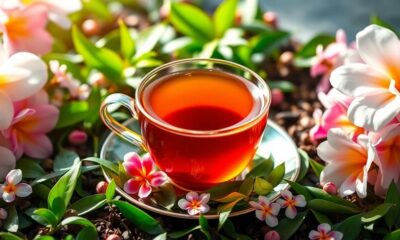
 Coffee Alternatives And Tea2 weeks ago
Coffee Alternatives And Tea2 weeks agoThe Tea That Claims to Reverse Aging – Is It Too Good to Be True?



























